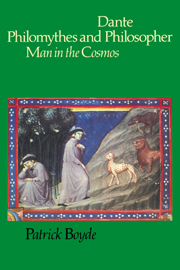6 - Concerning the heavens
Published online by Cambridge University Press: 17 September 2009
Summary
The material cause of the heavenly body
we have now considered all the central tenets and some of the more important ramifications of Aristotle's teaching concerning the four elements. We have seen what their properties are, and how their natural movements separate them into four concentric spheres, with the solid core of Earth at the centre and the invisible envelope of Fire at the extremity. We have noted the major exception to that natural ordering – the emergence of Earth above the sphere of Water in our northern hemisphere. We have seen how, in the vicinity of this terra discoperta (where the hot and wet element, Air, comes into contact with the cold and dry element, Earth), the four elements are being continually transmuted one into another to produce the many different phenomena described by the science of meteorology. We have also seen how the elements enter into relatively stable compounds under increasingly complex forms to make possible the generation of minerals, plants and animals. In fact, we have now studied the ‘material causes’ and, to some extent, the ‘formal causes’, of nearly all the things that are accessible to our senses and that awaken our natural desire to understand them. We are almost ready to perfect our knowledge of these objects and beings by passing on to consider their ‘efficient, instrumental and final causes’ – to discover, that is, Who made them, and How and Why.
- Type
- Chapter
- Information
- Dante Philomythes and PhilosopherMan in the Cosmos, pp. 132 - 171Publisher: Cambridge University PressPrint publication year: 1981



